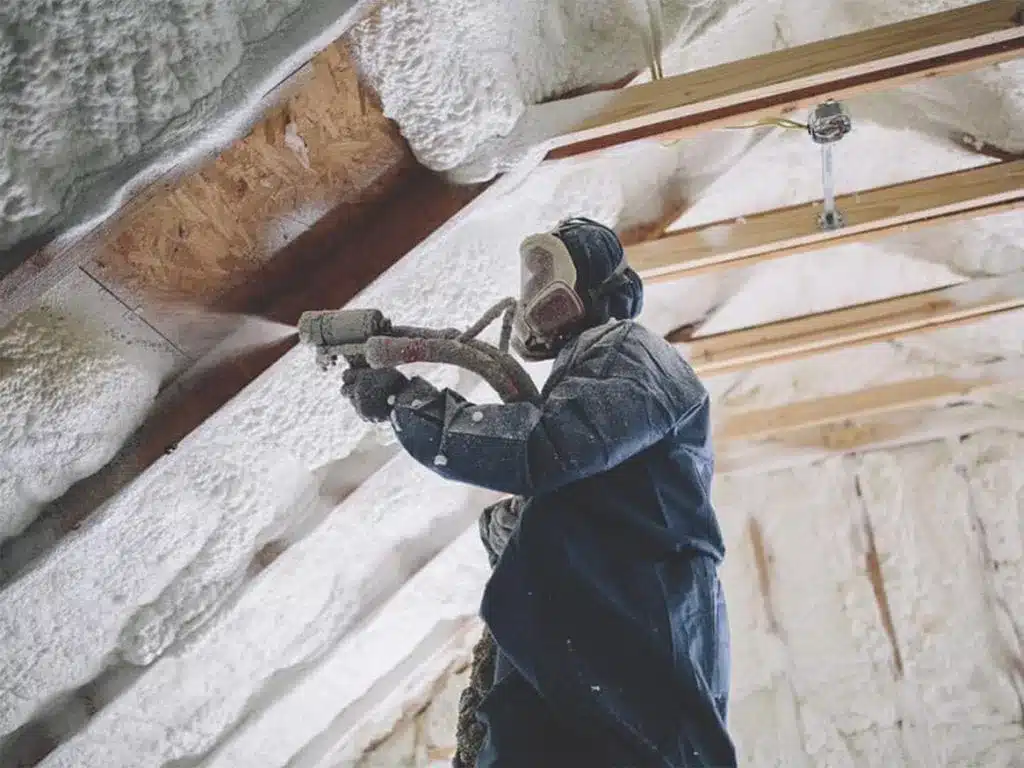If you’re looking to insulate your home and improve comfort while cutting down on energy bills, spray foam is one of the best options out there. But with a couple of different types to choose from, it’s easy to get confused. Should you go with open-cell? Closed-cell? What’s the real difference, and which one makes the most sense for your space?
Let’s break it all down in plain English so you can make a smart choice.
First, What Exactly Is Spray Foam Insulation?
Spray foam is a type of insulation that’s sprayed in place and then expands to fill cracks, gaps, and hard-to-reach spots. It sticks well to wood, metal, concrete—you name it. It’s great for sealing up air leaks and keeping your indoor temperature steady year-round.
The Two Main Types: Open-Cell vs. Closed-Cell
When people talk about spray foam, they’re usually referring to one of two kinds: open-cell or closed-cell. Each one has its own benefits, and which is best depends on what you’re trying to achieve.
🟢 Open-Cell Spray Foam
Think of open-cell as the lighter, softer version. It’s spongy and expands a lot—great for filling in tricky spots and helping with sound control.
Pros of Open-Cell:
- Cost-effective – It’s usually cheaper than closed-cell.
- Great for soundproofing – Perfect for interior walls or noisy rooms.
- Expands a lot – Fills gaps easily.
- Allows moisture to breathe – Helps avoid trapped humidity in certain areas.
Where It Works Best:
- Inside walls or ceilings
- Areas where sound control is a priority
- Spaces that don’t need a moisture barrier
What to Keep in Mind:
- Doesn’t insulate as well per inch as closed-cell
- Not ideal for damp areas like basements or crawl spaces
🔵 Closed-Cell Spray Foam
This type is denser, harder, and packs a punch when it comes to insulating power. It doesn’t expand quite as much, but it creates a tough, water-resistant barrier.
Pros of Closed-Cell:
- Top-tier insulation – Highest R-value per inch
- Water-resistant – Works as a moisture barrier
- Adds strength – Helps reinforce walls and roofs
- Saves space – You need less material to get high performance
Where It Shines:
- Exterior walls
- Attics, basements, and crawl spaces
- Garages or metal buildings
- Any place with potential moisture problems
What to Watch Out For:
- It costs more up front
- It’s less flexible and can be a little stiff in places with movement
Comparing Spray Foam Insulation: A Quick Chart
| Feature | Open-Cell Foam | Closed-CellFoam |
| R-Value | ~3.5–4.0 per inch | ~6.0–7.0 per inch |
| Cost | Lower | Higher |
| Water Resistance | Low | High |
| Soundproofing | Excellent | Moderate |
| Structural Support | Minimal | High |
Why the Installer Matters Just as Much as the Foam
Even the best insulation won’t do its job if it’s not installed right. Spray foam needs to be applied carefully—too much or too little, and you could end up with problems down the line. At Supreme Spray Foam – Fresno, we’ve been doing this a long time. We know how to get the job done cleanly, safely, and efficiently—so you get the full benefit of the foam you choose.
Final Takeaway
Both open-cell and closed-cell spray foam have their place. The “best” one really depends on what you’re trying to accomplish, where you’re installing it, and what your budget looks like. If you’re still unsure, don’t worry—that’s what we’re here for.
We’ll take a look at your space, talk through your goals, and recommend the right solution. No pressure, no sales gimmicks—just honest advice from people who know insulation inside and out.
📞 Ready to Talk Foam?
Give us a call at (559) 545-0800 or shoot us a message at [email protected]. We’ll help you figure out the best insulation for your home—and make sure it’s installed the right way the first time.


